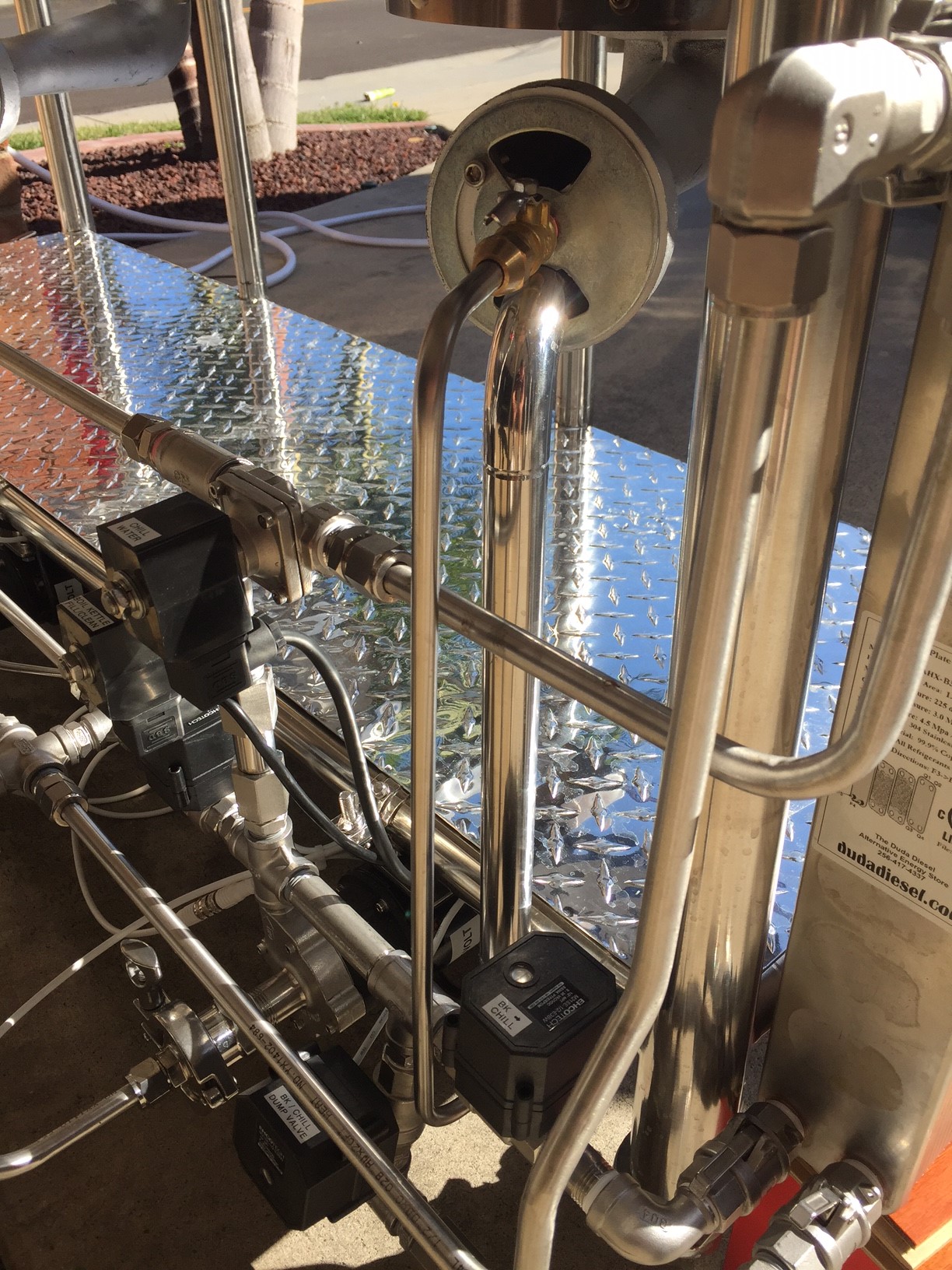So pretty much everyone out there running BG14s on NG must have this same issue.
I have the same issue using BG12's on NG and ran across this thread while researching. Based the results here and my own experiments/research, it does seem likely that many people running burners on NG could probably get more BTU's by pushing more air through the system.
My hunch is that the banjo burner venturi is designed to pull in air based on the pressure and volume of gas coming from the propane regulator (which steps down from high pressure in the tank and is usually adjustable from 0-5psi or 0-10psi). Natural gas sources tend to be much lower pressure(7" WC ~= 0.25psi, 11" WC ~= 0.4psi), so I'm speculating that the blower has two positive effects:
1) Increasing the volume of air in the air/gas mixture
2) Increasing the overall pressure of the air/gas mixture as it enters the burner
Here's what I've learned so far:
1) As shown by the OP, I was able to prove out the concept using an inflator pump I had at home (this was way too strong -- but with creative use of duct tape and other hacks I was able to reduce/direct the airflow to avoid blowing out the flame and prove that this significantly improved my heating time).
2) Using a manometer that I purchased off Amazon, I can see that I'm getting between 6.75 and 7" WC pressure at the orafice. Since my city NG supply runs at 7" WC nominal this seems acceptable/appropriate.
3) Comparing to my use on propane, I can see that the BG12's were running rich (too much yellow) and "low pressure" on NG (flames don't extend as high from the burner), regardless of how high I turn up the gas.
4) At a smaller orafice size, I was able to create a small but efficient flame (all blue). However, with this small flame I could see that the pressure and observed heating power was very low compared to the same burner on propane (very low height, 7G from 64 to 120 took ~30 minutes with NG).
5) By increasing the orafice size, I could get a taller and larger flame but it appeared rich (yellow) and "out of control" (flapping all over the place, extending around the base of the kettle and up the sides if enough gas is added).
Note: This is the point where I ordered a carbon monoxide detector from Amazon as well 
6) With a slightly larger orafice and increasing both the pressure and the volume of air entering the venturi, I was able to get a nice "clean" blue flame extending a few inches from the burner and significantly improved heating (7G from 64 to 120 in ~10 minutes).
At this point I just need to get this airflow a little bit more adjustable and ducted in a way that's more permanent to my stand. I think I'm going to buy one of the 20cfm squirrel cage blowers that the OP mentioned:
http://www.kr4.us/blower-squirrel-cage-12v.html?gclid=CIei2tblydECFUyAaQodmZ4AkA
Curious if the OP or anyone else has any other tips about this specific blower, what you used for a power source (would be nice to be able to vary the speed), and how you connected the blower to your ducting, etc.
Sorry for the long post -- just wanted to document my experience since I really couldn't find a lot of good info about others experiencing this problem or what they had found.














![Craft A Brew - Safale BE-256 Yeast - Fermentis - Belgian Ale Dry Yeast - For Belgian & Strong Ales - Ingredients for Home Brewing - Beer Making Supplies - [3 Pack]](https://m.media-amazon.com/images/I/51bcKEwQmWL._SL500_.jpg)



















































